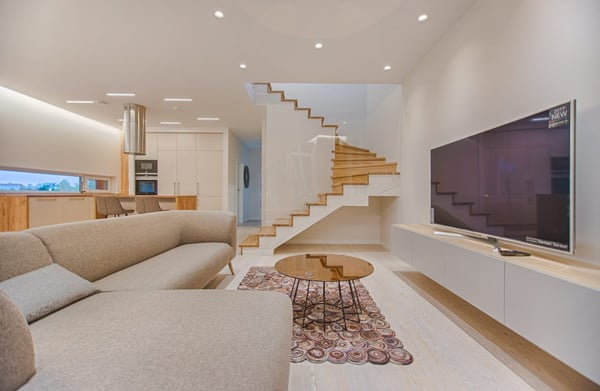Conducting an in-person model home tour is one thing, but doing it virtually is another. The ultimate goal of a model home tour is to create a connection between the buyer and the home. When the buyer has an emotional connection to the home, it increases the likelihood that they will end up buying a lot in your development. In-person tours allow sales agents to read the buyers faces and body language, which can aid in discussing topics of interest and pointing out important details. With a virtual tour, you don’t have that capability. Here are some tips for how to properly conduct a virtual model home tour.
First, let’s discuss what a virtual tour is. Some places use video walk-through’s as a virtual tour, some use 3D virtual tours and others use 360-degree interactive models as virtual tours. Additional options include FaceTime or Zoom calls where a realtor talks with the prospective buyer while showing them the house at the same time, and FaceTime or Zoom virtual open houses where a group of people can join. Regardless of which type of tour you choose, the following four tips are essential for a virtual model home tour.
Choose The Right Equipment
You don’t necessarily need the most expensive camera on the market, but it needs to have panoramic or 360-degree capabilities. Most of these types of cameras are easily affordable on today’s market. When choosing to do a 3D or 360-degree interactive tour, it is always best to use actual footage of the home, not a computer rendering. You want to make a connection between the home and the buyer, and that might not happen using computer generated images. Research the best camera for the type of tour you want to create, read the reviews and compare pricing.
As you go through the home taking videos and photos, be sure to capture each space from the vantage point you would place the buyer if they were there with you. You want to create the same feel as if they were physically in the home, so be sure to include footage from the areas that have the highest emotional impact.
Virtual Staging
While there are people and software out there capable of changing how a home looks with video editing, it is best to use the actual home for the tour. Staging is vital to creating that emotional connection, and you want your virtual tour to be representative of what the buyer is going to get. Keep everything clean and neutral, ensure there is nothing blocking the camera view when you take your shots. Take test shots, then review those to see if anything appears messy or distracting. If so, remove that item or replace it with something else. You want clear shots and clean looks. Make sure to use a tripod and keep it at the same level for each shot to keep it uniform throughout. If you’re doing a video walk-through, be sure to hold your camera as close to the same level as possible as you walk.
Dictate Everything
During an in-person tour, you will be sure to mention important details that might otherwise be missed. A specific amenity, an energy efficient device, a particular countertop material. As you go through each room, use the script you created for your in-person tours. Plan out each step, each shot, when and where you say things, just like you would with someone right next to you. This ensures you’re giving each potential buyer the same exact information, every single time.
Creating an emotional connection to a model home virtually is much more difficult than with an in-person tour. Utilizing technology, proper staging, showing off details and energy efficiency devices will go a long way to creating that connection. Ensure proper follow up with buyers who do virtual tours, see if they want an in-person tour or if they have any questions after the tour is done. Communication is essential when conducting business virtually, so be sure to stay in touch with buyers until they either agree to purchase or tell you they’ve chosen something else.

Recent Posts
- Spec Home Loans: Complete Guide to Construction Financing for Builders
- Spec Construction Loans: A Spec Line of Credit Is Worth the Paperwork
- Spec Homes and Pre-Sale Homes: Relative Benefits for a Spec Builder
- Spec Construction Success: Insights for the Investor Builder
- How Is a Spec House Different From Other Kinds of House Construction?
